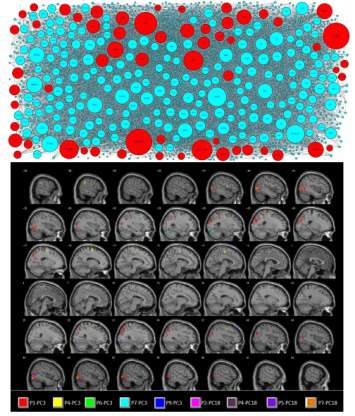Markov-inverse-F measure—a network connectivity approach using MVPA of fMRI

Multi-Voxel Pattern Analysis (MVPA) in functional magnetic resonance imaging (fMRI) studies is considered effective for studying how the human brain represents the meanings of words, when combined with a representational space of language corpus.
However, few attempts have been made to use word association norms as a semantic network to explore how lexical-relatedness is measured as a similarity in neural activation patterns.
Now, members of the Hiroyuki Akama laboratory at Tokyo Tech in collaboration with Brian Murphy at Carnegie Mellon University (Queen's University) have developed an original distance definition for graphs, called the Markov-inverse-F measure (MiF), and measured its effectiveness for predicting a neural activity recorded during conceptual processing in the human brain.
Reconciling both geodesic computation and co-occurrence adjustment, MiF provides a linguistic graph information of word association norms (EAT).
When applied to the fMRI datasets of Mitchell et al.'s Science research (2008), our model could obtain with the best predictive accuracy a scalar parameter that specifies the degree to which each voxel in the brain is activated by each word.
A new fMRI decoding technique was created to elucidate the relationship between semantic and neural networks in computational neurolinguistics.
More information: Hiroyuki Akama et al. Using Graph Components Derived from an Associative Concept Dictionary to Predict fMRI Neural Activation Patterns that Represent the Meaning of Nouns, PLOS ONE (2015). DOI: 10.1371/journal.pone.0125725




















